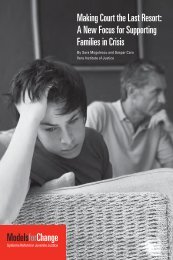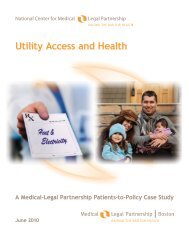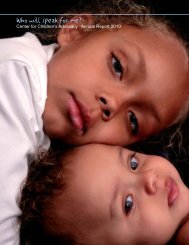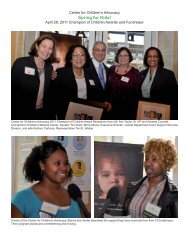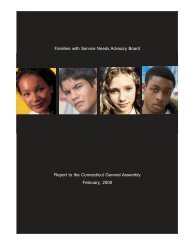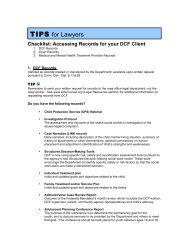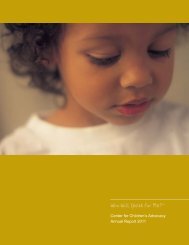The Untapped Power of Schools to Improve the Health of Teens
The Untapped Power of Schools to Improve the Health of Teens
The Untapped Power of Schools to Improve the Health of Teens
- No tags were found...
Create successful ePaper yourself
Turn your PDF publications into a flip-book with our unique Google optimized e-Paper software.
Panel AWhiteel B.BlackMixed/OPanel APanel B●●●WhiteBlackMixed/O<strong>the</strong>rMAPPING FRIENDSHIP GROUPS<strong>The</strong> integration <strong>of</strong> friendship groups across lines <strong>of</strong> race, gender and social status enhances students feeling <strong>of</strong>connectedness <strong>to</strong> school.<strong>The</strong> figures above show how social scientists map social networks. Each circle on <strong>the</strong> maps above represents a student,and each line depicts a friendship selection made. Clusters <strong>of</strong> connected circles are friendship groups; circles on <strong>the</strong>perimeter with no connecting lines reveal socially isolated students.Panel A is a map <strong>of</strong> a large school with relatively equal numbers <strong>of</strong> White students and Black students.<strong>The</strong>re are twolarge friendship groups made up predominantly <strong>of</strong> Black students.<strong>The</strong>re are also two predominantly White friendshipgroups. O<strong>the</strong>r minority students are well represented throughout <strong>the</strong> school’s social network. In this racially integratedschool, Black and White students have formed segregated friendship groups.To a lesser extent friendship groups tend <strong>to</strong> segregate <strong>the</strong>mselves by socioeconomic status and gender as well.<strong>The</strong>result is a lower level <strong>of</strong> connectedness among most students.Panel B depicts a school that is predominantly White. Students <strong>of</strong> color are equally represented in each <strong>of</strong> <strong>the</strong> fivefriendship groups. When friendship groups are integrated in this way, school connectedness tends <strong>to</strong> be higher.In both schools <strong>the</strong>re are students with no friends. Not surprisingly, <strong>the</strong>se students feel <strong>the</strong> least connected <strong>to</strong> school.Many schools have implemented strategies <strong>to</strong> identify <strong>the</strong>se young people and help link <strong>the</strong>m in<strong>to</strong> <strong>the</strong> school’s socialfabric.15



